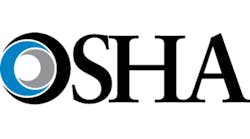The U.S Department of Labor’s Occupational Safety and Health Administration is extending the comment period for its proposed rule on exposure to crystalline silica in the workplace. The proposed rule was introduced in late August, with the stated goal of lowering workers’ health risks.
Silica, or silicon dioxide, is frequently found in manufacturing operations, notably foundries where sand is in use, but also in glassmaking and sand blasting. It’s also found in construction operations where cutting, sawing, drilling and crushing of concrete, brick, block or other stone products takes place.
“Exposure to silica can be deadly, and limiting that exposure is essential,” stated assistant secretary of labor Dr. David Michaels in August. “Every year, exposed workers not only lose their ability to work, but also to breathe. This proposal is expected to prevent thousands of deaths from silicosis—an incurable and progressive disease—as well as lung cancer, other respiratory diseases and kidney disease. We’re looking forward to public comment on the proposal.”
OSHA can set workplace standards on its own initiative, or in response to petitions from other parties, including the Secretary of Health and Human Services, the National Institute for Occupational Safety and Health (NIOSH), state and local governments or other recognized standards-producing organization, employer or labor representatives, or any other interested person.
Once it proposes a new rule, the public is invited to submit comments on the proposal prior to enactment.
Employers Need More Time
In response to requests for an extension of the comment period for the new silica standard, OSHA postponed the deadline for submitting written comments and testimony from December 11 to January 27, 2014. It’s known that the National Association of Manufacturers sought the extension, though Small Business Administration also sought extra time to submit comments.
OSHA also extended by 30 days, to Dec. 12, 2013, the deadline to submit notices of intention to appear at its public hearings on the new rule. Public hearings are scheduled to begin on March 18, 2014, and will continue for several weeks as necessary to manage the number of parties requesting to appear.
The proposed rule on silica exposure includes two separate standards, one for general industry and maritime employment, and one for the construction industry. It establishes new exposure limits for respirable crystalline silica and identifies methods for controlling worker exposure, conducting medical surveillance, training workers about silica-related hazards, and recordkeeping.
When it introduced the new rule in August, OSHA predicted that once its standards are in effect it would save nearly 700 lives and prevent 1,600 new cases of silicosis every year.
“The proposed rule uses common sense measures that will protect workers’ lives and lungs—like keeping the material wet so dust doesn’t become airborne,” Michaels explained. “It is designed to give employers flexibility in selecting ways to meet the standard.”
OSHA emphasized that its proposal is based on a review of scientific and technical evidence, it said, and takes into consideration current industry consensus standards. It also incorporates the results of “outreach by OSHA to stakeholders, including public stakeholder meetings, conferences and meetings with employer and employee organizations.”
“We strongly encourage the public to assist in the process of developing a final rule by submitting written comments and participating in public hearings,” Michaels stated. “We especially hope to hear from employers, workers, and public health professionals who have experience in successfully protecting workers from silica-related diseases. We are extending the comment period to ensure we hear from all stakeholders who wish to participate.”









